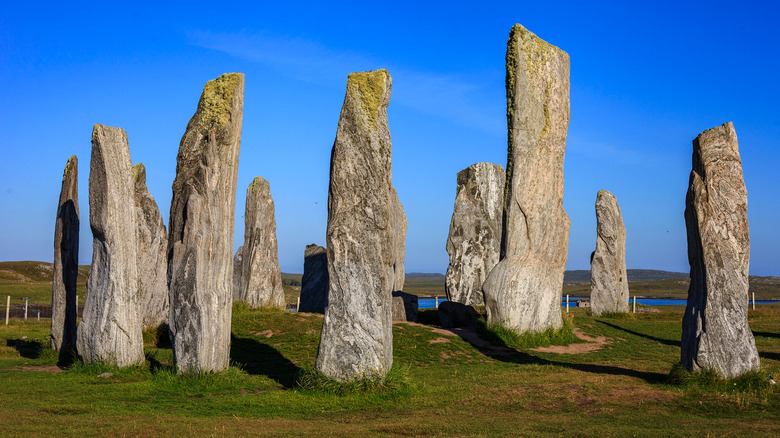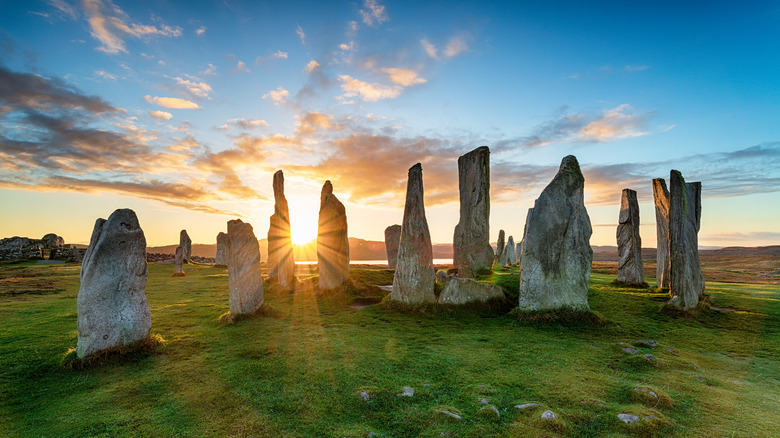The History Behind The Callanish Stones
If we were to mention "a strange, ancient circle of stones in the United Kingdom," you would no doubt think of Stonehenge. But as it turns out, the UK is full of stone monuments, equally strange and equally ancient. One of these arrangements is known as the Callanish Stones, and is located on the island of Lewis in northern Scotland. The Callanish Stones are made up of a central circle of large, standing stones, as well as several additional rows of stones branching out from the center, per Atlas Obscura.
Like Stonehenge, the origin and purpose of this stone monument has confused researchers for decades. But new evidence may help to explain the history of the Callanish Stones.
The Callanish Stones date back 5,000 years, to the Neolithic period, the latest segment of the Stone Age. By then, most people in the UK had settled into villages and begun farming. Among these communities, it's theorized, stone circles were sometimes constructed as a means to commemorate the dead.
But the story behind the Callanish Stones doesn't end there. Per the BBC, some of the stones in the arrangement weigh over 10 tons, which would make Callanish an extremely difficult-to-construct memorial. This has led many to believe that there must be some additional, deeper purpose behind the construction of the Callanish stone monument. Some researchers claim to have figured it out. A 2016 study in the Journal of Archaeological Science: Reports (posted at Science Direct) suggests that the Callanish Stones may have an astronomical purpose.
The Callanish Stones may have been ritual sites, or even ancient observatories
In the study, researchers examined the landscape surrounding the Callanish Stones (and other similar stone monuments in the UK), as well as the position of the sun, moon, and other astronomical bodies relative to these monuments.
Lead researcher Gail Higginbottom concludes that "the landscapes on which the stones were set were specifically chosen to show the most extreme rising and setting points of the Sun and Moon," per the BBC. Her team found that this was not just true for Callanish, but for hundreds of stone circles across Scotland, indicating an innate curiosity about the heavens among Scotland's Neolithic people.
But not everyone agrees with this theory. For example, Dr. Kenneth Brophy of the University of Glasgow, Scotland, believes that there is not enough evidence to support the notion that Britain's ancestors were motivated by mathematics and astronomy. "That's a very modern way of looking at the world," he told the BBC. Dr. Brophy asserts that monuments like the Callanish Stones were more likely built in places of cultural importance, and were used as gathering places for social rituals — in particular, to honor the dead, or even to cremate or bury them. Others have suggested that stone monuments were status symbols, with neighboring groups competing to build the biggest ones possible.
It's still unknown which of these was the true purpose of monuments like Callanish, or if it's some combination of these theories.

